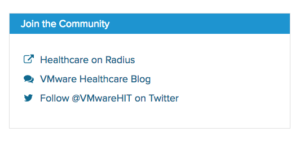
Technology branding strategies: How to code your identity for humans
You’ve spent countless hours developing a game-changing technology. You know all the nitty gritty details of its functionality and want to showcase your technical skills and knowledge.
Your website is laden with pages of detailed descriptions, specs, and a chronology of product development.
But, the people aren’t listening. The problem — your granular descriptions don’t compute.
When people visit your website and encounter dense paragraphs, they’re likely to click away. These details matter to you, but they likely do not speak to your customers.
A technology branding strategy will help make your nonhuman offerings relatable to humans.
Technology branding strategies add value
Even if you’ve found the perfect combination of price point and performance, if you don’t have a branding strategy, you’re missing a piece of the formula.
Having a strong brand to lean on will:
- Provide an anchor for your organization in the fast-changing technology landscape — your products may change, but your brand will stay the same
- Make your offerings relevant and desirable to your customers
- Provide a customer connection that can translate into loyalty
How to humanize your technology brand
Brand strategy is a broad topic, encompassing a defined organizational purpose, consistent brand behavior, an emotional impact, and more.
A key purpose of a strong technology branding strategy is to inject humanness into your brand. We can accomplish this by defining your brand personality and the emotional response you want to elicit from your audience.
Consider the following brand personalities and examples to help guide your own brand strategy development, and transform your robotic interactions into interactions that grow customer loyalty.
The reinforcer brand
A reinforcer brand confirms its audience’s perspective. They’re dialed in on their consumers desires and needs.
If you’re serving a particular industry or narrow audience, this is likely your strategy of choice.
With a specific offering that resonates on a deep level, your audience will gleefully form a community.
For example, VMWare, a leading enterprise technology company, offers a diverse selection of products and services ranging from cloud management to data security. Its healthcare solutions target the industry’s needs specifically with digital workspaces, data security, and IoT for hospitals and clinics.
Its brand personality can be observed in its web content, which is centered on use cases and the end user. What you don’t find here is a slew of technical specs and product development history.
VMWare reinforces its relevance by building community with an active social media presence and blog. Its brand is actively aligning its offerings with its consumer’s worldview to build trust and community.

VMWare’s healthcare community
Takeaway: As a reinforcer brand, pinpoint ways to closely tie your offerings to your audience’s needs and desires. To live out your brand personality, integrate messages that encourage collaboration, community, and trust.
The supporter brand
A supporter brand invites behavior modifications or improvements. They’re solving a problem with an innovative solution that asks their audience to make a change.
If you’re a supporter brand, you can win your customer’s heads and hearts with educational resources and inspirational stories.
IBM’s suite of collaboration platforms invites employers to find the tools that empower their people to “do what they do best.” The product video presents complicated technology in an inspiring and captivating way.
Takeaway: As a supporter brand, look for opportunities to help your audience make adaptations so they can successfully use your product or service. Focus your messages on empowerment, rather than product capabilities. Be your customer’s cheerleader.
The challenger brand
A challenger technology brand questions the status quo and offers a groundbreaking alternative. They’re persuasive and rebellious.
Its audience also thrives on thinking outside the box and regularly seeks alternatives.
Slack, a business application, challenged the way teams do work. The founders questioned the logic of disconnected channels and created a centralized hub for all communication and collaboration needs.
Slack centers its brand on the need to change workplace behavior. This message comes through in its product video and social media content.

Takeaway: As a challenger brand, you can activate your audience with a directive to change their behavior. But be tactful. If you’re too pushy, your approach will backfire.
Bridge the gap
Whether you’re a reinforcer, supporter, or challenger, a technology branding strategy can bridge the gap between your human audience and your nonhuman offerings.
Each of these strategies focuses on the end user rather than the ins and outs of the product or service itself.
Choose a brand personality that aligns with your organization, and centralize your messaging on that persona. The result — a technology brand strategy coded for humans.
This article is also published on Medium.
More Resources
-

Article
Safeguard Your Investment: the 411 on Accessible DesignHow can an organization truly serve the public if they can’t reach the whole public? In the U.S., one in...
-

Article
How to Win Over Riders with a Better Digital Transit ExperiencePublic transportation keeps our cities moving, connecting people to their jobs, schools, and favorite hangout spots. As urban areas expand...
-

Article
Checklist of Federal and State Requirements for Developing an Accessible Website in TexasUnderstanding accessibility Designing a website that’s “accessible” means you’re providing an equivalent experience for all users, regardless of the physical...




